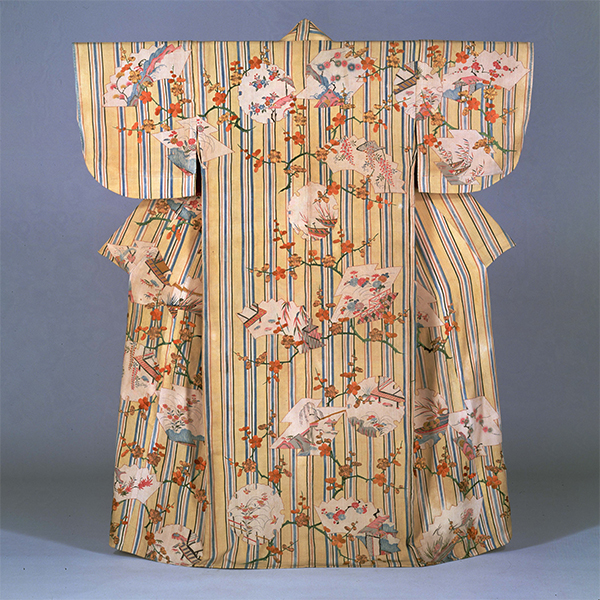The Art of Fashion | 17th–19th century
-

Kimono (Kosode) with Stripes, Windows, and Plum Branches, Edo period, 18th century
Japanese Gallery (Honkan) Room 10
March 7, 2023 (Tue) - April 23, 2023 (Sun)Japan's traditional clothing, kimono, are based on kosode — the outer wear of the Edo period (1603–1868). At first, the court nobility and samurai wore under other clothing. But from about the 15th century, the samurai began using them as daily outer wear. In the 17th century, kosode became the most common clothing for men and women of all classes.
Wealthy women placed orders for custom–made kosode at luxury clothing stores. They often chose the patterns from clothing–design books that were published and widely circulated. Together with these kosode, they wore hairpins and combs to accent their elaborate hairstyles.
In contrast, men wore kosode with understated patterns like stripes or checks.
Their usual fashion accessory was a small case (inrō) and a toggle (netsuke) for securing the case to the sash. This gallery features kosode and accessories, together with prints and paintings (ukiyo–e) showing how people wore them and how fashions changed over time.
| Designation | Name | Creation/ Excavation/ Provenance |
Period | Acquisition/ Ownership/ Accession Number |
CMT | ||
| Highlight | Kimono ("Kosode") with Cherry Trees and Waves | Edo period, 18th century | Private collection | ||||
| Highlight | Kimono ("Kosode") with Stripes, Windows, and Plum Branches | Edo period, 18th century | I-3871 | ||||
| Highlight | Gift Cover (Fukusa) with Cherry Trees and Peacocks | Edo period, 19th century | I-103 | ||||
| Highlight | Case (Inrō) with Peach Blossoms and Pigeons | Edo period, 19th century | H-99 |
